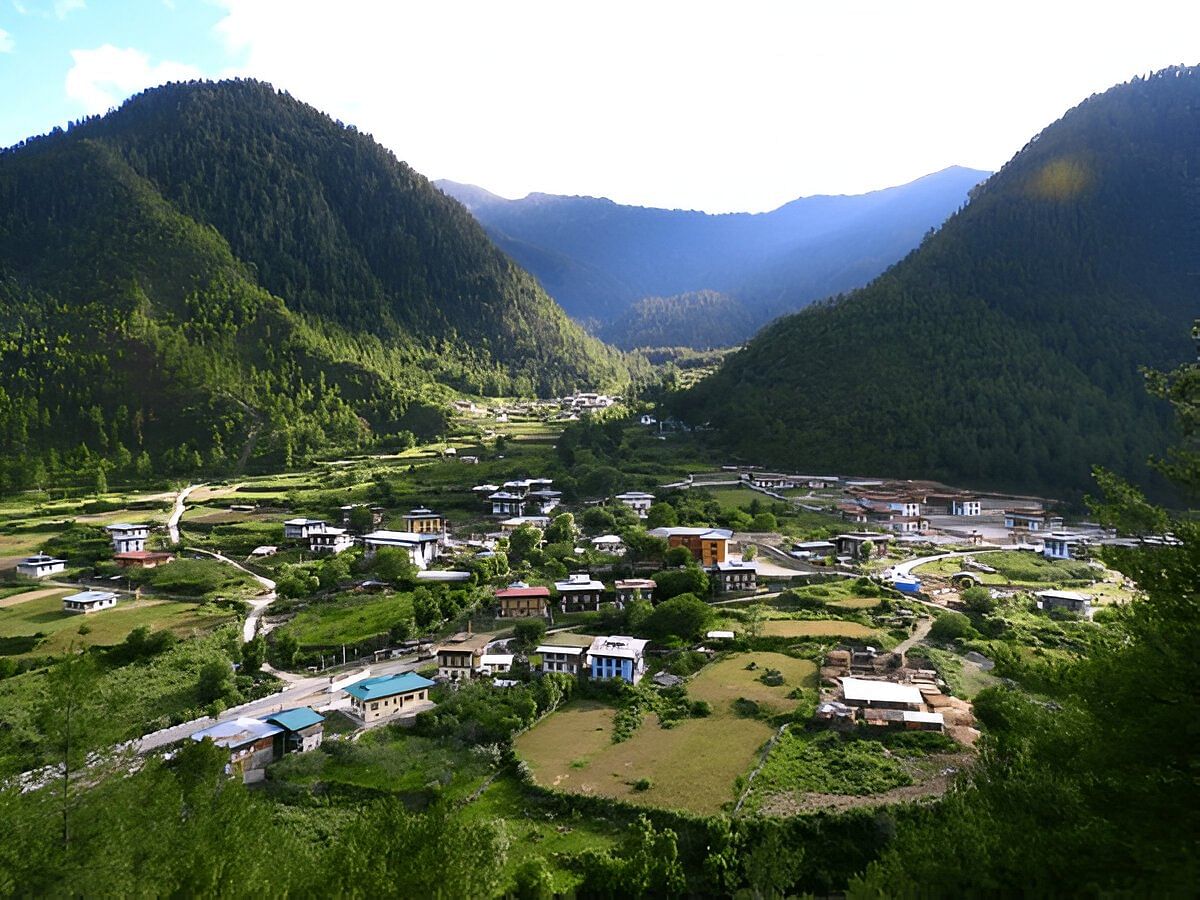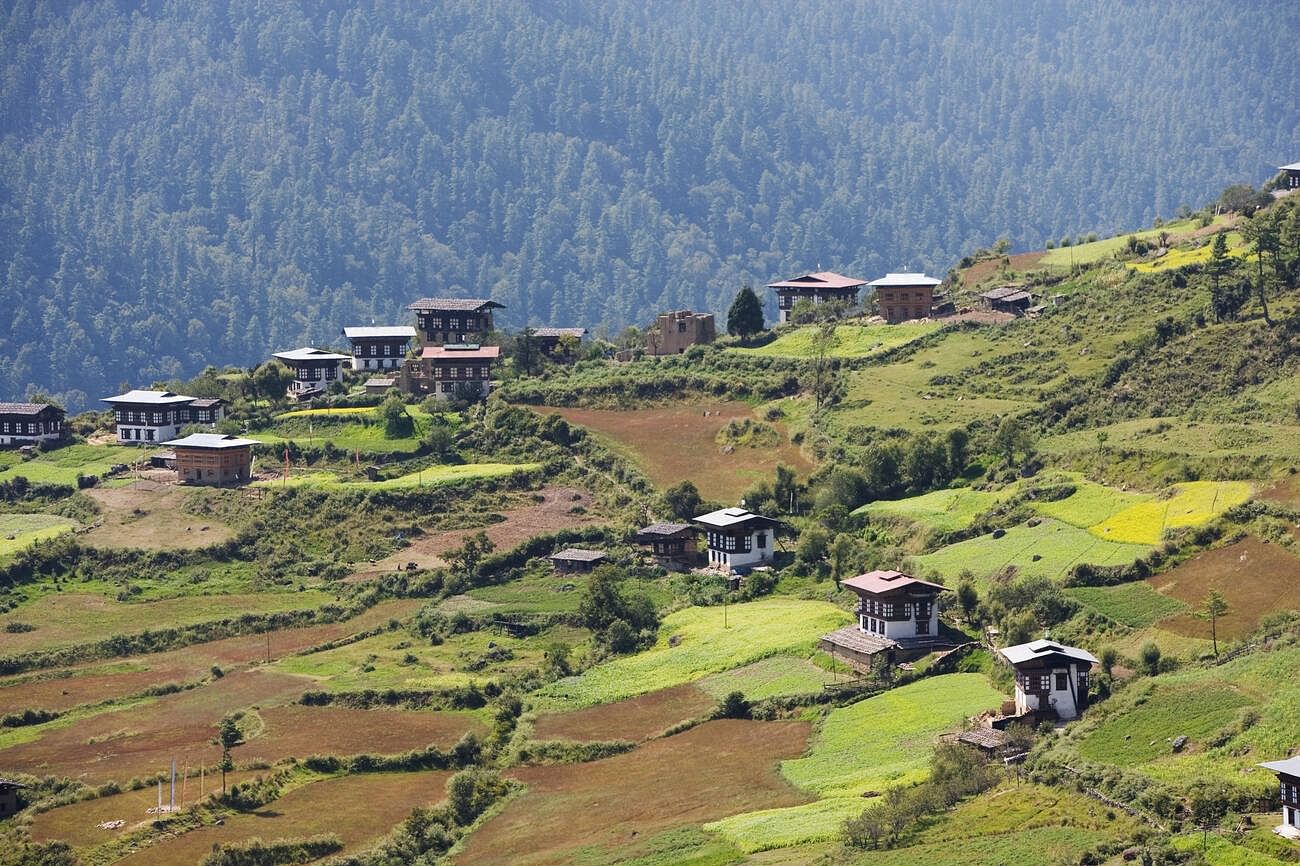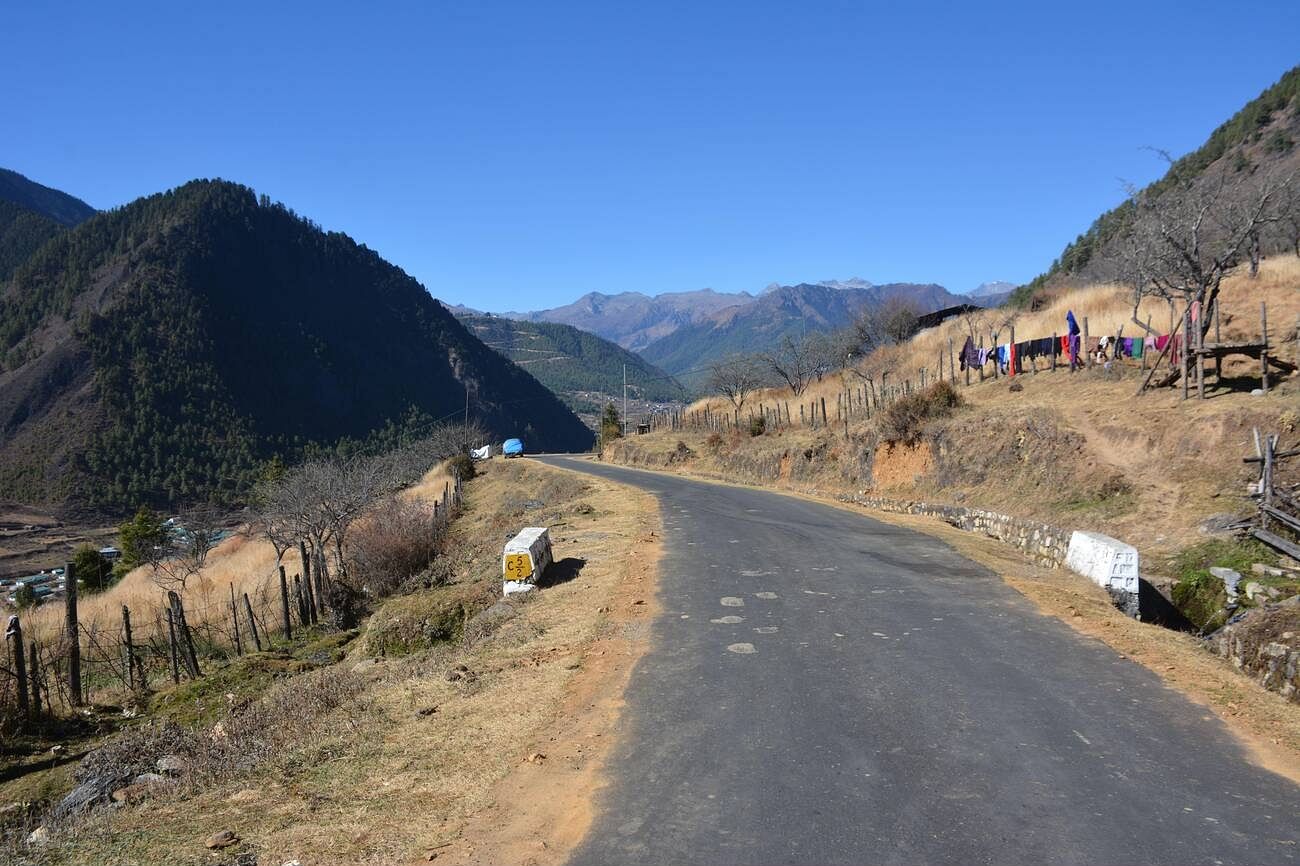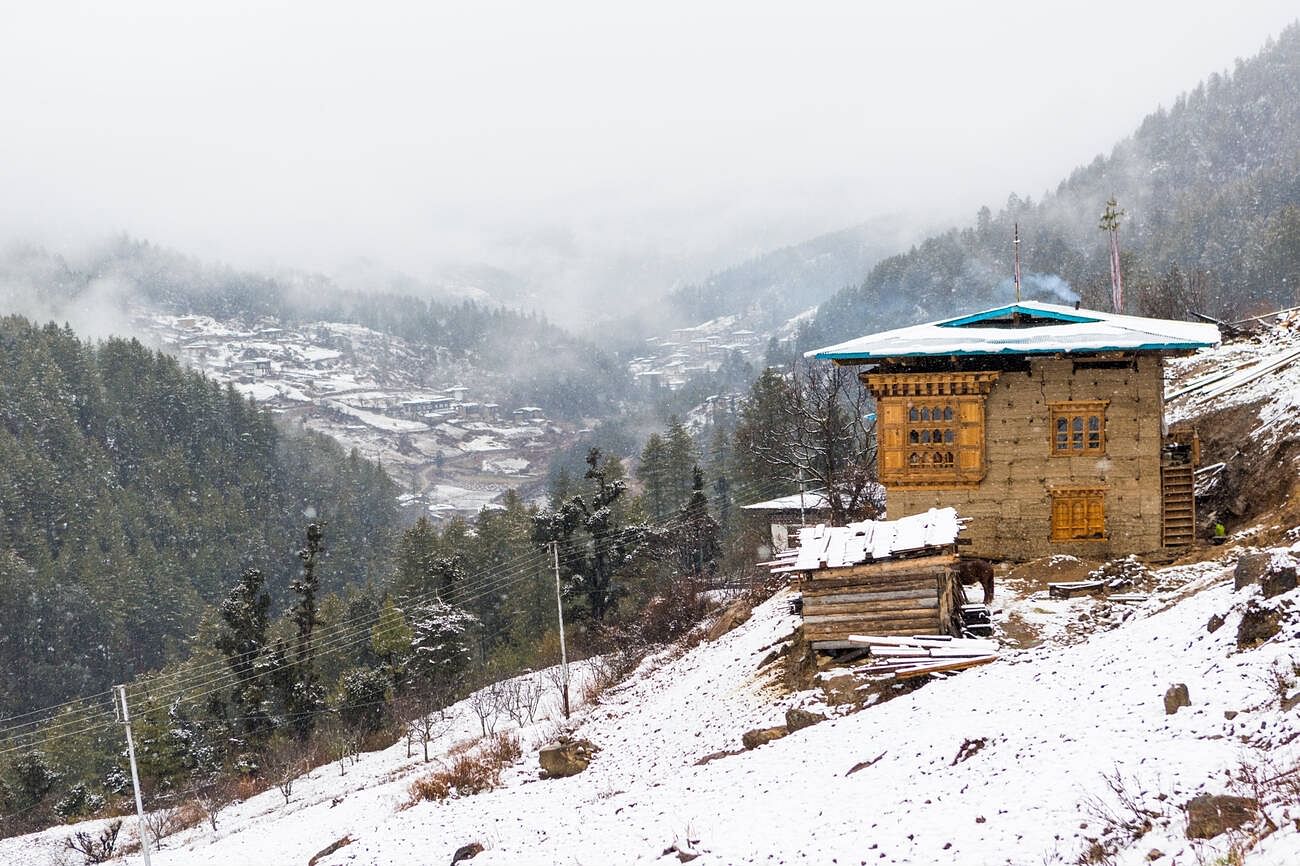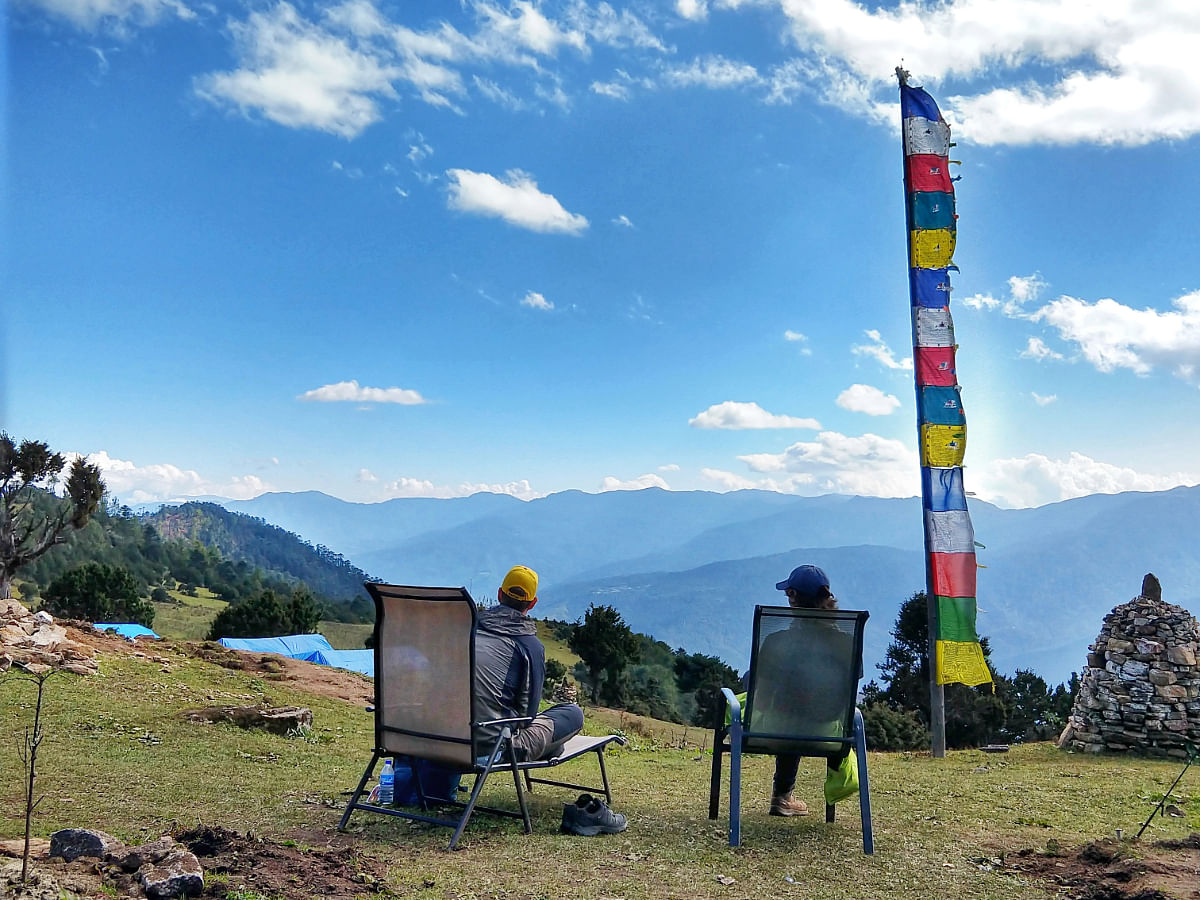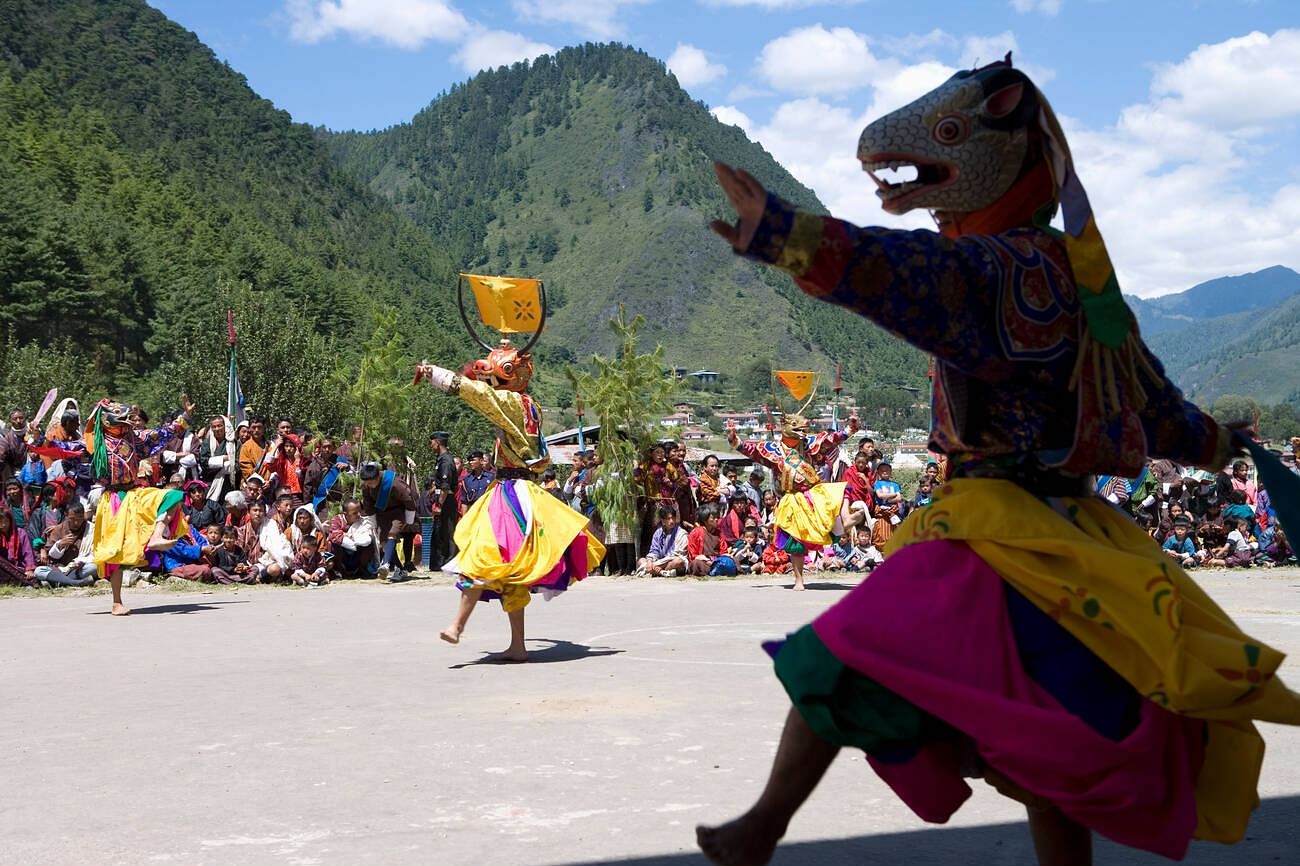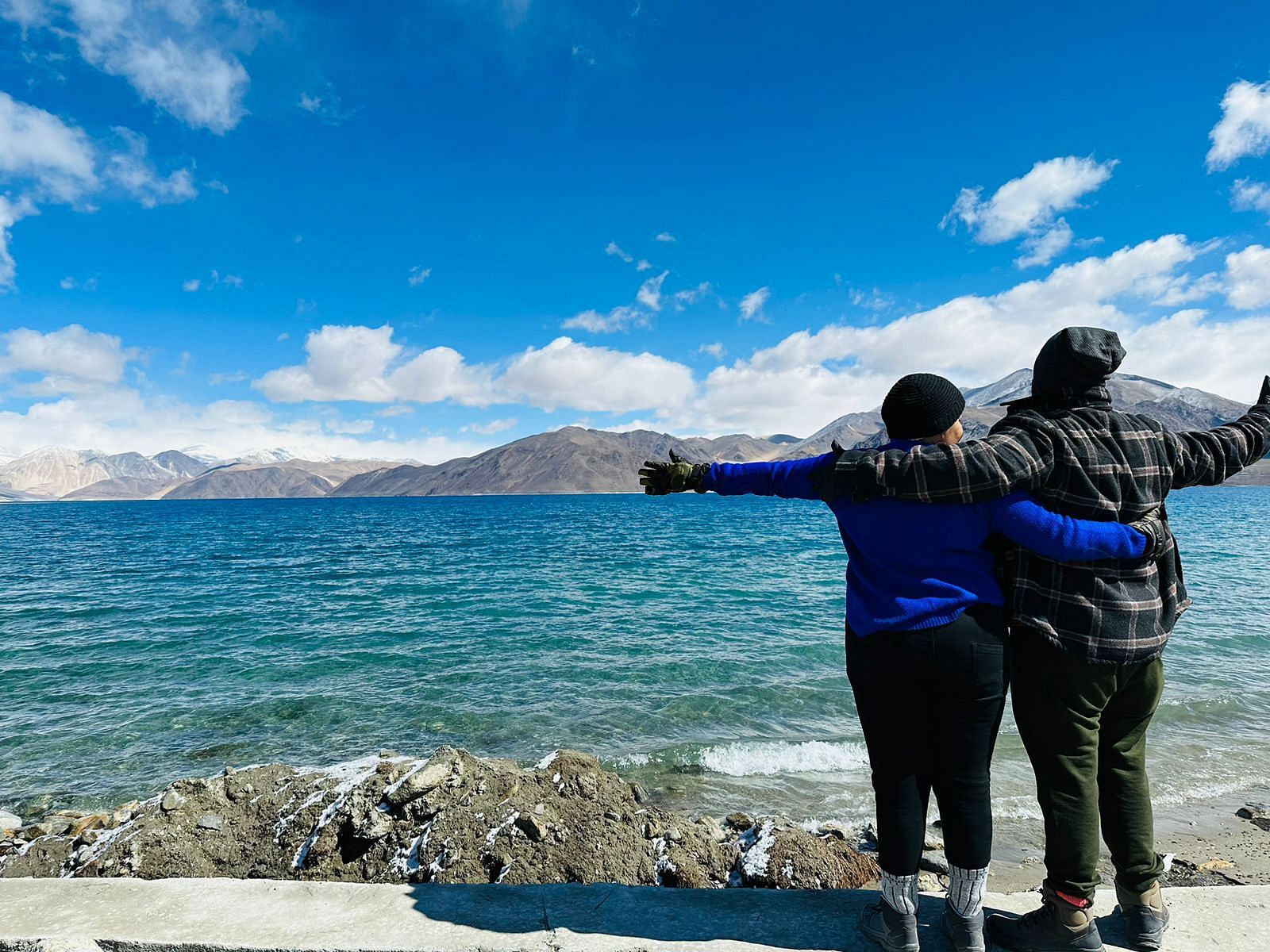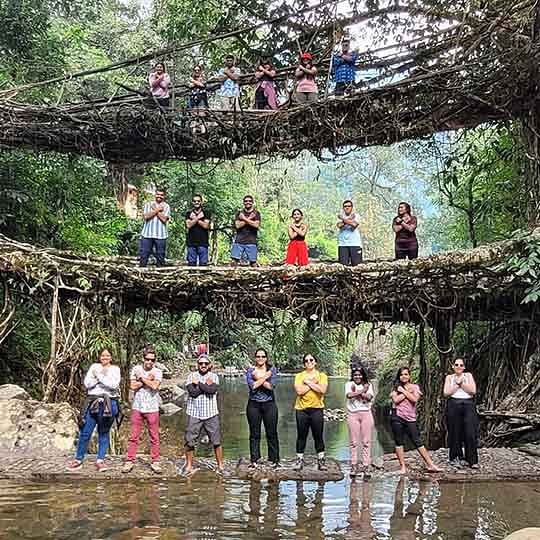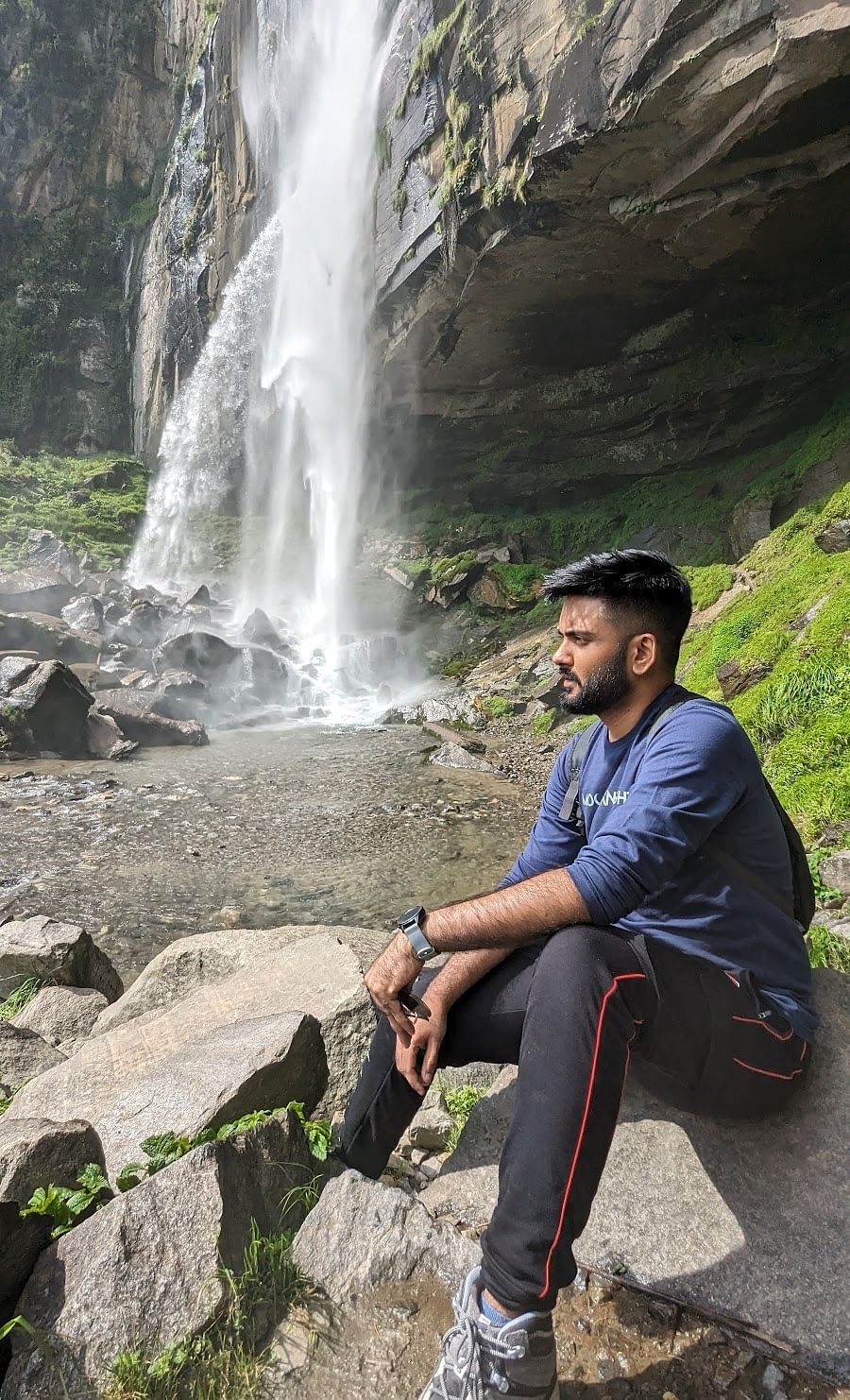Here's something nobody tells you about Bhutan - there's this valley called Haa that barely gets any visitors. And honestly? That's exactly why you should go there.
This place is different. No tour buses clogging up the roads. No crowds fighting for the perfect Instagram shot. Just a valley where people actually live their lives the way their grandparents did. Kids still help with the harvest. Neighbors still know each other's names.
The drive from Paro takes maybe an hour. You go up and over Chele La Pass - yeah, it's cold up there, don't forget your sweater. But once you drop down into the valley, it hits you. This is what Bhutan looked like before tourism took off.
You can walk around the villages without feeling like you're bothering anyone. The Hoentay dumplings are worth the trip alone - seriously, we still think about them. And if you just want to sit somewhere quiet and breathe, well, good luck finding a better spot.
Best time? October or November. The weather cooperates and you can actually see the mountains instead of staring at clouds.
Haa Valley is one of those places to visit in Bhutan that reminds you why you started travelling in the first place. If that sounds like your thing, our Bhutan Tour Packages can sort you out.
When it comes to the history and culture of Haa Valley, it runs deep. Locals still follow ancient customs, and the valley is dotted with old monasteries and temples. Two of the most important are Lhakhang Karpo (the White Temple) and Lhakhang Nagpo (the Black Temple). These are believed to be over a thousand years old.
These temples in Bhutan were built in the 7th century during the reign of Tibetan King Songtsen Gampo. According to legend, the king released a black and a white pigeon to select the sites for the temples. The white pigeon landed where Lhakhang Karpo now stands, and the black one where Lhakhang Nagpo stands.
The two temples are close to each other and are tied to a famous Bhutanese legend about balancing good and evil. Whether or not you believe in old stories, standing there, surrounded by nature and quiet, it’s hard not to feel something powerful.
People in Haa are deeply religious, and you’ll often see them lighting butter lamps or spinning prayer wheels. The culture here isn’t something they perform for tourists—it’s part of their daily life. You might even come across local monks chanting inside ancient halls, adding to the valley’s timeless atmosphere.
You can also experience their beautiful festivals. One such event is the annual Haa Summer Festival, where locals wear traditional clothes, dance, sing, and showcase their customs. It’s a chance to see the valley’s unique identity in full bloom. Other festivals include religious ceremonies where the entire community comes together for blessings and feasting.
Suggested Read: Honeymoon Places In Bhutan
How to Reach Haa Valley Bhutan
If you’re wondering how to reach Haa Valley Bhutan, the easiest way is by road from Paro. It’s about a 2.5-hour drive, crossing the beautiful Chele La Pass—one of Bhutan’s highest motorable roads. On a clear day, you’ll even get views of Mount Jomolhari, one of Bhutan’s sacred peaks.
By Air: Flying into Bhutan
Paro International Airport is Bhutan's sole international airport and the primary gateway for travellers. Located approximately 65 kilometres from Haa Valley, it serves as the most convenient entry point.
- Flights to Paro: Major cities like Delhi, Kolkata, Guwahati, Bagdogra, and Gaya in India offer flights to Paro via Bhutan Airlines and Druk Air.
- From Paro to Haa Valley: After landing, you can hire a taxi to Haa Valley, which typically costs around 1,064 INR. Alternatively, local buses are available from Paro to Haa, with tickets priced at approximately 200 INR.
By Road: Overland Journey from India
For those preferring an overland route, entering Bhutan via India is a viable option:
- Entry Point: The most common entry is through Phuntsholing, Bhutan's border town, adjacent to Jaigaon in West Bengal, India.
- Immigration: Ensure your travel documents are in order, and be aware that the immigration office in Phuntsholing is closed on weekends and Bhutanese national holidays.
- Route to Haa Valley: From Phuntsholing, travel to Thimphu to obtain the necessary travel permits. Subsequently, proceed to Haa Valley via Chuzom and Paro.
Public Transport and Shared Options
While public transportation options are limited, some services are available:
- Buses: Local buses operate from Thimphu to Haa, with fares around 240 INR.
- Shared Taxis: Shared taxis from Thimphu to Haa are available, costing approximately 500-600 INR per seat. Private taxis can be hired for about 1,940 INR.
- Tour Operators: Some tour operators offer mini-bus services (tempo travellers) on a seat basis, providing a comfortable alternative for travellers.
So yes, how to reach Haa Valley Bhutan, isn’t too complicated—but the journey itself is part of the magic. The winding roads, forests, and mountain views are unforgettable.
Suggested Read: Bumdeling Wildlife Sanctuary
Best Time to Visit Haa Valley
The best time to visit Haa Valley depends on what you want to experience. If you love flowers and green hills, spring (April to June) is beautiful. Rhododendrons bloom, and the valley comes alive with colour.
If you prefer cool, clear weather and colourful festivals, visit in autumn (September to November). This is when the skies are clear and the landscapes are golden.
Winter can be peaceful too, but quite cold and snowy. Summers are lush and green, but occasional rains may slow you down. No matter the season, the valley’s beauty never disappears.
During the Haa Summer Festival in July, the valley transforms into a cultural hotspot. Farmers take a break from their fields, and everyone joins in the celebration. If you want to enjoy the best of both nature and culture, plan your trip around this time.
Things to Do in Haa Valley
You might think a quiet valley doesn’t offer much to do, but actually, there are quite a few things that will stay in your memory for a long time. Here are some things to do in Haa Valley:
1. Visit the Ancient Temples
Start with Lhakhang Karpo and Lhakhang Nagpo. These are not just tourist spots—they're spiritual centres with real meaning for the locals. The carvings, murals, and peaceful surroundings make them worth visiting.
2. Hike or Walk Through the Villages
There are easy trails through pine forests, riversides, and villages. No big treks needed—just gentle, peaceful walks. Chat with locals or just sit by a stream. Some trails lead to scenic viewpoints where you can see the valley stretch out below.
3. Try Local Food
Bhutanese food is warm and spicy. Try Hoentay (a type of dumpling), red rice, or chilli cheese (Ema Datshi). Meals here are made from farm-fresh ingredients, often cooked over a wood fire. You can even learn to cook some of these dishes during a homestay experience.
4. Attend the Haa Summer Festival
If you’re lucky to be around in July, don’t miss the Haa Summer Festival. It’s a celebration of local food, culture, music, and traditional sports. It's also a fun way to meet locals and learn more about their lifestyle. Events include yak riding, mask dances, and traditional games.
5. Photography and Bird Watching
The landscapes are so beautiful that you’ll want to take photos every few steps. The valley is also home to many birds and butterflies, so keep your eyes open. Early morning is the best time for bird watching.
6. Learn Traditional Crafts
Some villages offer short classes in weaving, painting, or wood carving. It’s a hands-on way to learn about Bhutanese culture and take home a handmade souvenir.
These things to do in Haa Valley may seem simple, but they are rich experiences that connect you with nature and people.
Suggested Read: Monsoon in Bhutan
Accommodation Options in Haa Valley
There aren’t many hotels in the valley, but that’s part of the charm. Most visitors stay in local guesthouses or farm stays. The rooms may be basic, but they’re clean, cosy, and full of warmth.
Some accommodation options in Haa Valley include:
- Soednam Zingkha Heritage Lodge: A beautifully restored traditional Bhutanese house.
- Risum Resort: Offers simple rooms with beautiful views.
- Local homestays: For a truly authentic experience, stay with a Bhutanese family. Share meals, stories, and even help with farm chores if you like.
You’ll be treated like family, and many places offer homemade meals and local tea. It’s the kind of stay where you wake up to mountain views and the smell of fresh wood smoke.
Most of these places also offer activities like archery practice, nature walks, and traditional hot stone baths. Staying in the valley means more than just sleeping—it's about living like a local, even for a short time.
Suggested Read: Adventure Activities in Bhutan
Places to Visit Near Haa Valley
There are also a few places to visit near Haa Valley if you want to explore more:
- Chele La Pass: This stunning mountain pass lies between Haa Valley and Paro. It's the highest road pass in Bhutan, sitting at an elevation of about 3,988 meters. On clear days, you can see Mt. Jomolhari, one of Bhutan’s tallest peaks. The area is filled with fluttering prayer flags and offers great photo opportunities.
- Paro Valley: Just a 2-3 hour drive from Haa, Paro is famous for the Tiger’s Nest Monastery (Taktsang), which is perched on a cliff. The valley also has a lovely river, charming markets, and the National Museum of Bhutan.
- Kila Nunnery: Located on the way between Haa and Paro, Kila Nunnery is one of the oldest nunneries in Bhutan. The hike to this spiritual retreat offers breathtaking views and a chance to meet Buddhist nuns living in solitude.
- Dobji Dzong: This fortress-monastery is located on the route from Chuzom to Haa and is believed to be Bhutan’s first dzong. Built in the 16th century, it offers great views and holds historical significance.
- Samdingkha Village: This small village near Haa is known for its terraced fields and local dairy production. You can learn about cheese and butter-making and enjoy the calm lifestyle of rural Bhutan.
- Has Samarpudung Viewpoint: A lesser-known but lovely viewpoint that gives sweeping views of the entire Haa Valley. Ideal for sunrise or sunset photography.
These nearby places help you combine nature, culture, and adventure in a single trip.
Why You Should Visit Haa Valley
Haa Valley offers something hard to find in many tourist spots – silence and simplicity. You won’t find big crowds, flashy shops, or fast food chains. Instead, you’ll find calm rivers, prayer flags fluttering in the wind, and people who live close to the earth.
Whether you’re a solo traveller, a couple looking for quiet time, or someone interested in traditional culture, Haa Valley can be the perfect getaway.
Suggested Read: 7 Bhutan Villages To Explore This Year
A Few Travel Tips
- Bring warm clothes, even in summer. Mornings and evenings are cool.
- Be respectful at temples—no shoes inside, and dress modestly.
- The Internet may be slow or not available in some areas. Enjoy the digital break!
- Carry cash—ATMs are hard to find in the valley.
- Book your stay early in peak seasons. Accommodation is limited.
- Try local activities like archery or a hot stone bath.
- Take your time. Don’t rush. This is a place meant to be savoured slowly.
Conclusion
If you’ve been searching for a place that’s quiet, real, and full of soul, Haa Valley might be exactly what you need. It’s not a place for rushing or checking off a bucket list. It’s a place for breathing deeply, slowing down, and connecting with nature, with people, and maybe even with yourself.
Don’t wait for the “right time.” Book the trip, take the road less travelled, and let the peace of Haa Valley show you a different kind of beauty.
So what are you waiting for? Discover the magic of Haa Valley for yourself and let its calmness touch your heart.





